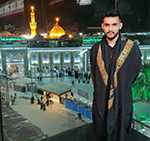The overall aim of Discovering Muslims in Britain is to support teachers to embed sociological perspectives in the classroom.
The project was inspired by my own research, discussions about the RE/ RVE curriculum in Wales, and the expertise of the Islam-UK Centre at Cardiff University. The project was a response to an emerging desire to represent local, ‘lived’ expressions of religious traditions in the classroom. The sociological approach to the study of Islam and Muslims in the UK that the Islam-UK Centre specialises in lends itself to this kind of analysis, so it seemed like a great opportunity to try and bring this expertise into the RE classroom.
I’ve always thought it odd that there is a lot of research out there that tells teachers what to do, yet distinctly less that attempts to implement ideas for the classroom. Yet there is always a clamour on various RE forums for resources, especially quality resources from a reputable source. Feedback from focus groups showed the need for resources that were practical and accessible for the ‘average’ school and teacher.
We developed both teaching resources and CPD training in an attempt to put research into practice. This is the principle at the core of Discovering Muslims in Britain.
We came across some unexpected surprises. Firstly, we found much wider institutional support than we had expected, from both schools and Cardiff University. This shows us that there is a desire to support projects like this. Secondly we found that creating ‘classroom ready’ resources really means resources that are easily adaptable, we cannot predict each classroom context, teacher, school type and level of expertise. We felt this was a productive solution.
The most crucial question we grappled with is what constitutes ‘legitimate’ knowledge about Islam. There were some anxieties from teachers where accounts of Muslims in the resource seemed to contrast with the “textbook answer”. Such anxieties reflect longstanding tensions between representing “official” and “lived” accounts of religion in the classroom, as well as with scholarship itself. Unpicking these tensions may be a fruitful avenue for further research, and improve the RE curriculum.
After creating the resource, our top tip is to treat the accounts of people, in this case Muslims, as a source of knowledge and evidence about a religious tradition alongside that of the traditional sources of knowledge and wisdom. By comparing and contrasting these sources, and trying to unpick the differences, we can begin to get at differences in context, and how abstract teachings or historical narratives are “made real” today.
In the course of this research we came across some good sources of information about Islam. One that stands out is the Muslim Museum Initiative. The work of the scholars at the Islam-UK Centre is also really useful – check out the Public Seminar Series.
The process has given me valuable insights into teaching about religion generally. Something that really struck us when trying to conceptualise the course is negotiating the tension between teaching about the “core” of Islam, or constructing a kind of fixed framework of concepts to begin to understand what Islam was, and then presenting “lived” Islam as enshrined in the perspectives of Muslim communities. Importantly, shifting the focus from understanding Islam to understanding Muslims also afforded us more room to lead with the idea of Islam as understood and lived by Muslims, and more room to achieve the latter. We hope teachers continue to use and benefit from this resource.
Find the Discovering Muslims in Britain Resource here
